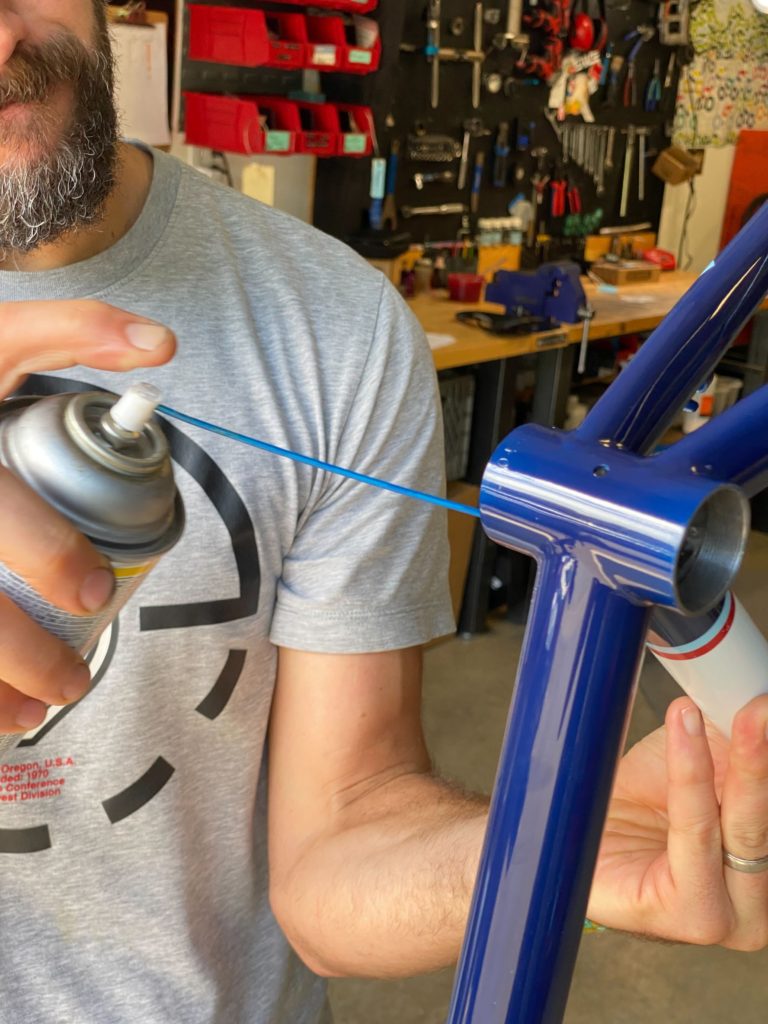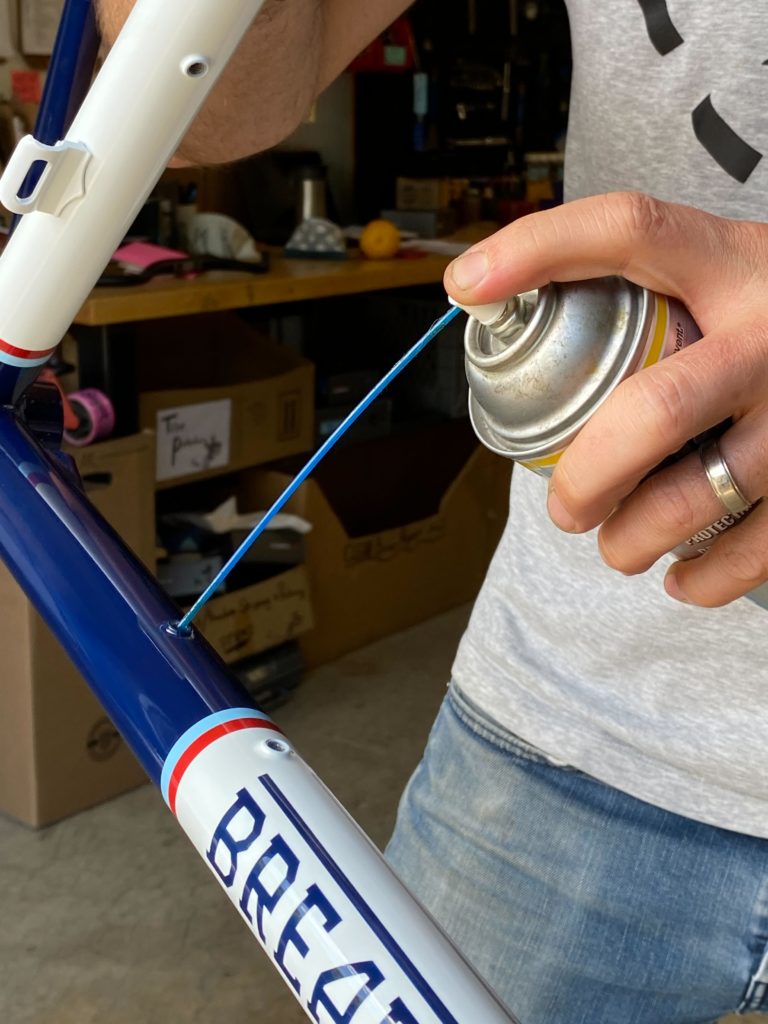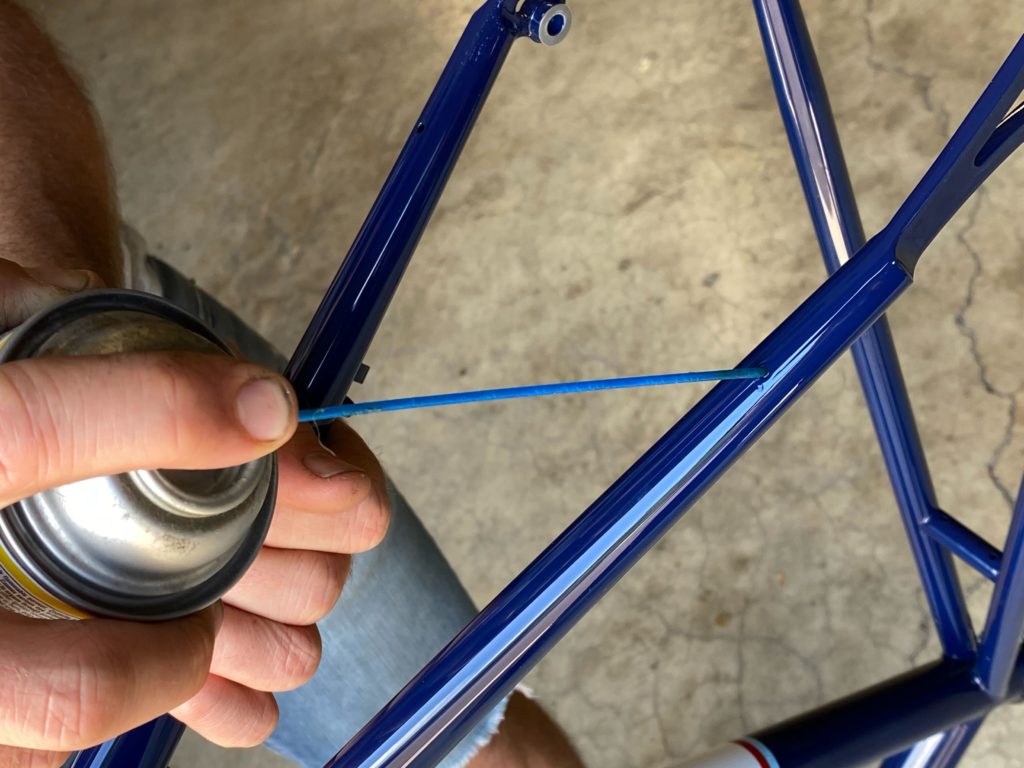How to Use Framesaver in Your Steel Bicycle Frame
Posted on: June 28th, 2022
Easily Treat Your Bike at Home – For Decades of Happy Steel Riding

We treat each and every Breadwinner frame with a heavy duty framesaver as part of our frame prep process when they are fresh from paint. Modern steel tubing has some resistance to corrosion and many new steel bikes are sent out the door with no treatment at all with no issues. We want your frame (and all steel bikes) to last as long as possible which is why I have described the simple process to treat your frame at home.
Beyond making a bike frame look beautiful, the paint acts as a defense to the elements and chemicals that can cause corrosion. It is important to treat the inside of the tubes as well. Under normal conditions we suggest using framesaver annually as part of regular maintenance. In areas of the world where salt and chemicals are used on roads or areas near ocean moisture, corrosion can be more of an issue and we recommend treating your frame more often (twice a year or as often as you feel necessary).
Back in the day people would use boiled linseed oil to treat steel frames with a heavy coat of oil inside but today we prefer Framesaver. Any good bike shop should be able to order and may have on hand.
It is easiest to apply with the headset and bottom bracket removed but so long as you can access vent holes inside the seat tube or headtube, you are set. Framesaver is designed to get into all the tight spots where water would rest and oxidize with air. The most likely area for issues would be around the bottom bracket and chainstays where water can pool in the frame.
Get Started
Remove water bottle cages on the seat tube and/or remove the seatpost from the frame after marking the height with tape. Take the bottle cage off the downtube to access bottle boss holes in the frame. Use the small tube on the framesaver nozzle to spray inside the vent holes and/or bottle bosses.

A Few Quick Sprays
The aerosol is effective in getting the oil into the frame and it doesn’t take much. A few quick sprays and then rotate the frame so it coats as much as possible. Keeping in mind the oil will flow down. Some will ooze out vent holes so try to avoid getting on shoes or clothes. Using too much will be messy and risk getting into the bearings in the bottom bracket and/or headset. Modern sealed bearings help here for sure and make this a non issue.

Next Steps
Once you spray inside the main tubes, rotate the frame to see the tiny vent holes in either end of the seat stays and near the dropouts on the chainstays. These vent holes are used to allow gas to escape during the brazing and welding process. We do not recommend plugging them up as they allow water to escape and the inside of the tubes to dry out.
Use the small tube on the framesaver nozzle to spray inside the tubes. Do the same for the chainstay and seatstay bridges. You may need to remove the fender to access holes. Again rotate and wipe up any drips with WD40 or rubbing alcohol.
If you have a steel fork, you can apply to the vent holes here also. The vent holes in the crown exit inside the steerer tube so it’s easiest to spray in holes near the dropouts.
Rotate the frame/fork and wipe up any excess oil dripping out before reinstalling parts. I prefer to keep the bike sitting on the floor rather than hanging up so the oil will settle where water would after a wet ride or wash.
These simple steps will provide decades of happy steel bike riding. Enjoy!






 @DylanVanWeeden
#goo
@DylanVanWeeden
#goo
